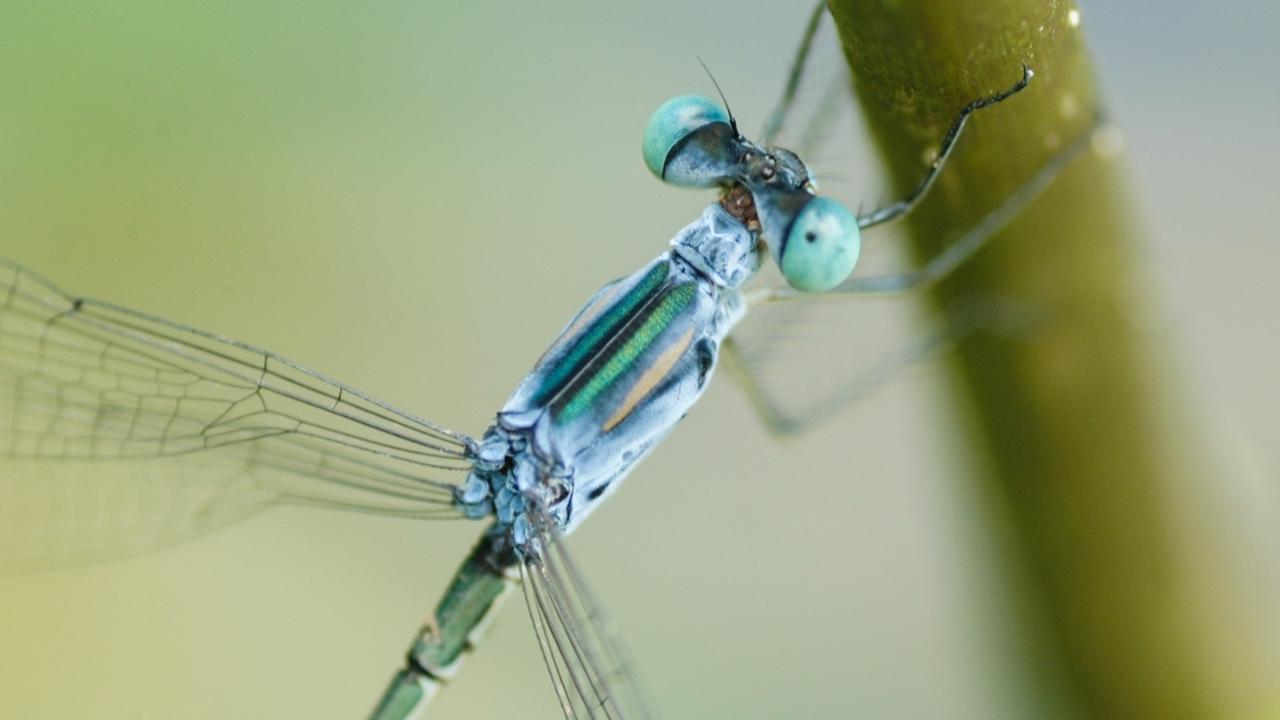Wildlife researchers successfully rediscovered a species of damselfly that had remained unseen by scientists for over a century

Pic/Dattaprasad Sawant
In a remarkable discovery that showcases the extraordinary biodiversity of Mumbai's Aarey Forest, wildlife researcher Shantanu Joshi, in collaboration with Dr. Dattaprasad Sawant of KEM Hospital and a dedicated team of researchers led by wildlife researcher Rajesh Sanap, has successfully rediscovered a species of damselfly that had remained unseen by scientists for over a century.
ADVERTISEMENT
This significant revelation occurred within the boundaries of the Aarey Milk Colony and the pristine surroundings of Sindhudurg, adding a fascinating chapter to the region's natural diversity.
Rajesh Sanap, one of the authors of the scientific paper, stated, "Lestes nigriceps, commonly known as the Dark-striped spreadwing, has been rediscovered after nearly a century from Aarey Milk Colony, Mumbai Suburban District, and the lateritic plateaus of Sindhudurg District. The findings also highlight the area's rich biodiversity."
The scientific paper, published in the International Journal of Odonatology on October 16, involved a team of researchers, including Shantanu Joshi, Dattaprasad Sawant, Akshay Dalvi, Yogesh Koli, Muhammed Haneef, Rajesh Sanap, and Krushnamegh Kunte.
This rediscovery is a testament to the hidden treasures of the Aarey Forest, where nature continues to unveil its secrets, offering valuable insights into the region's unique ecosystems.
The damselfly, Lestes nigriceps, is known for its glittering emerald stripes on its thorax, striking turquoise-blue eyes, and the distinctive shape of its abdomen's end organs, called caudal appendages. Spreadwings are recognised for their behavior of perching with partially opened wings, setting them apart from most damselflies that perch with fully closed wings.
India is home to 12 species of spreadwings, including the newly rediscovered Dark-striped spreadwing. While the Western Ghats, a UNESCO World Heritage site and biodiversity hotspot, previously housed only 8 known species, the recent discovery increases the count to 9.
The Dark-striped Spreadwing was originally discovered in 1924 in Pusa, Bihar, by British Odonata scientist Lt. Col. F. C. Fraser. Subsequently, the species remained enigmatic until scientist Oleg Kosterin found a population in Eastern Cambodia in 2019. However, the Indian Peninsula had no confirmed records of the Dark-striped Spreadwing until its rediscovery in the Western Ghats.
This discovery emphasizes the importance of exploring and conserving the vast uncharted habitats within the Western Ghats, contributing to our understanding of the region's remarkable biodiversity.
The Aarey Forest, already renowned for its ecological significance, now boasts a count of 54 Odonate species, thanks to the dedication and expertise of these researchers.
Notably, this research was made possible with the support of various contributors, including Dr. Ben Price and Dan Hall, who provided valuable photographs and resource material. Mohamed Haneef from Kerala also played a crucial role in providing resources for comparison with other Spreadwing species of Southern India, while Dr. Krushnamegh Kunte of NCBS Bengaluru provided essential laboratory and microscopic assistance.
The Dark-striped Spreadwing is believed to have a seasonal flight pattern, emerging from late July to mid-September. It primarily breeds in stagnant water bodies, such as ponds and seasonal lateritic pools, with abundant aquatic vegetation. Aarey Colony currently houses the largest known breeding population of Dark-striped Spreadwing, but it is likely that many other such populations exist in wetlands throughout Maharashtra.
Odonates, a group comprising dragonflies and damselflies, are vital components of aquatic ecosystems. Their nymph stages, from egg to exuvia, are spent underwater, where they play a crucial role in controlling mosquito larvae and other small aquatic insects. As they transition to their adult stage, they continue to contribute to ecosystem balance by preying on other insects, including mosquitoes and bees.
The life cycle of Odonates consists of three stages: egg, aquatic larval, and short-lived adult stages. This rediscovery reinforces the need to protect and preserve the natural wonders of the Aarey Forest and other ecologically significant regions.
 Subscribe today by clicking the link and stay updated with the latest news!" Click here!
Subscribe today by clicking the link and stay updated with the latest news!" Click here!







